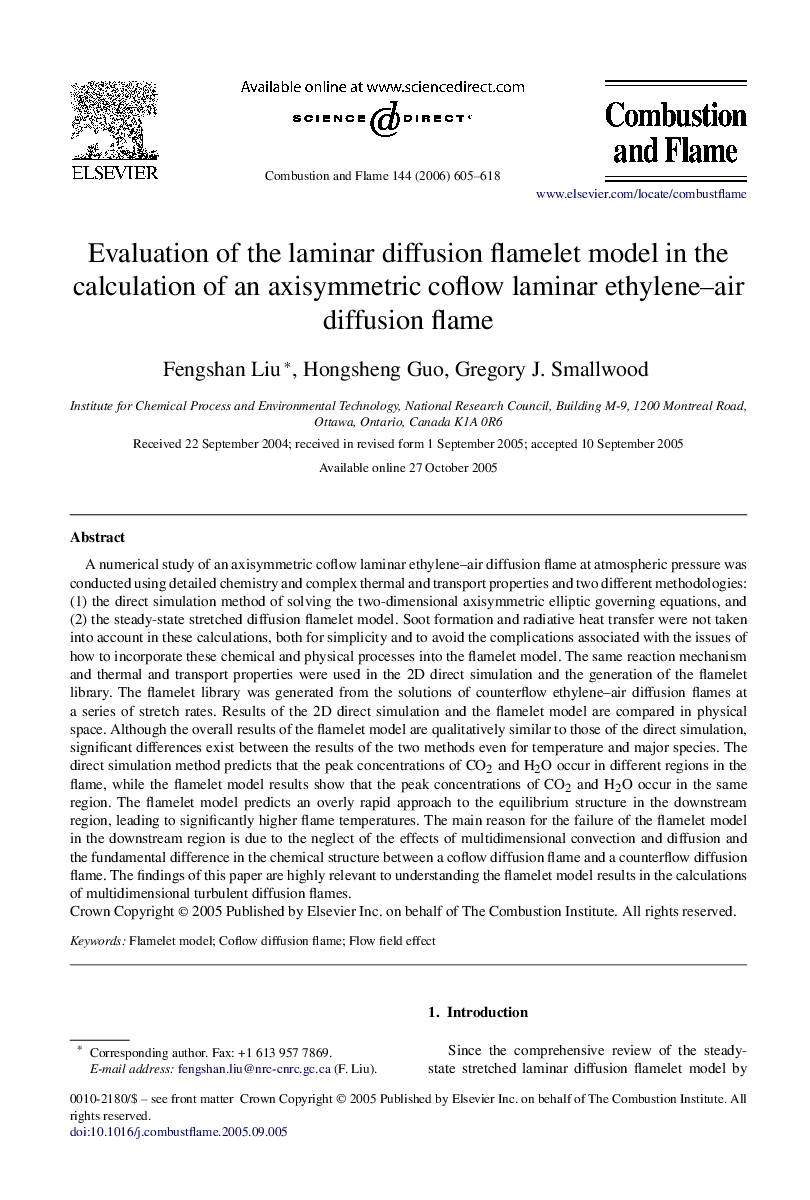| کد مقاله | کد نشریه | سال انتشار | مقاله انگلیسی | نسخه تمام متن |
|---|---|---|---|---|
| 167517 | 457866 | 2006 | 14 صفحه PDF | دانلود رایگان |

A numerical study of an axisymmetric coflow laminar ethylene–air diffusion flame at atmospheric pressure was conducted using detailed chemistry and complex thermal and transport properties and two different methodologies: (1) the direct simulation method of solving the two-dimensional axisymmetric elliptic governing equations, and (2) the steady-state stretched diffusion flamelet model. Soot formation and radiative heat transfer were not taken into account in these calculations, both for simplicity and to avoid the complications associated with the issues of how to incorporate these chemical and physical processes into the flamelet model. The same reaction mechanism and thermal and transport properties were used in the 2D direct simulation and the generation of the flamelet library. The flamelet library was generated from the solutions of counterflow ethylene–air diffusion flames at a series of stretch rates. Results of the 2D direct simulation and the flamelet model are compared in physical space. Although the overall results of the flamelet model are qualitatively similar to those of the direct simulation, significant differences exist between the results of the two methods even for temperature and major species. The direct simulation method predicts that the peak concentrations of CO2 and H2O occur in different regions in the flame, while the flamelet model results show that the peak concentrations of CO2 and H2O occur in the same region. The flamelet model predicts an overly rapid approach to the equilibrium structure in the downstream region, leading to significantly higher flame temperatures. The main reason for the failure of the flamelet model in the downstream region is due to the neglect of the effects of multidimensional convection and diffusion and the fundamental difference in the chemical structure between a coflow diffusion flame and a counterflow diffusion flame. The findings of this paper are highly relevant to understanding the flamelet model results in the calculations of multidimensional turbulent diffusion flames.
Journal: Combustion and Flame - Volume 144, Issue 3, February 2006, Pages 605–618